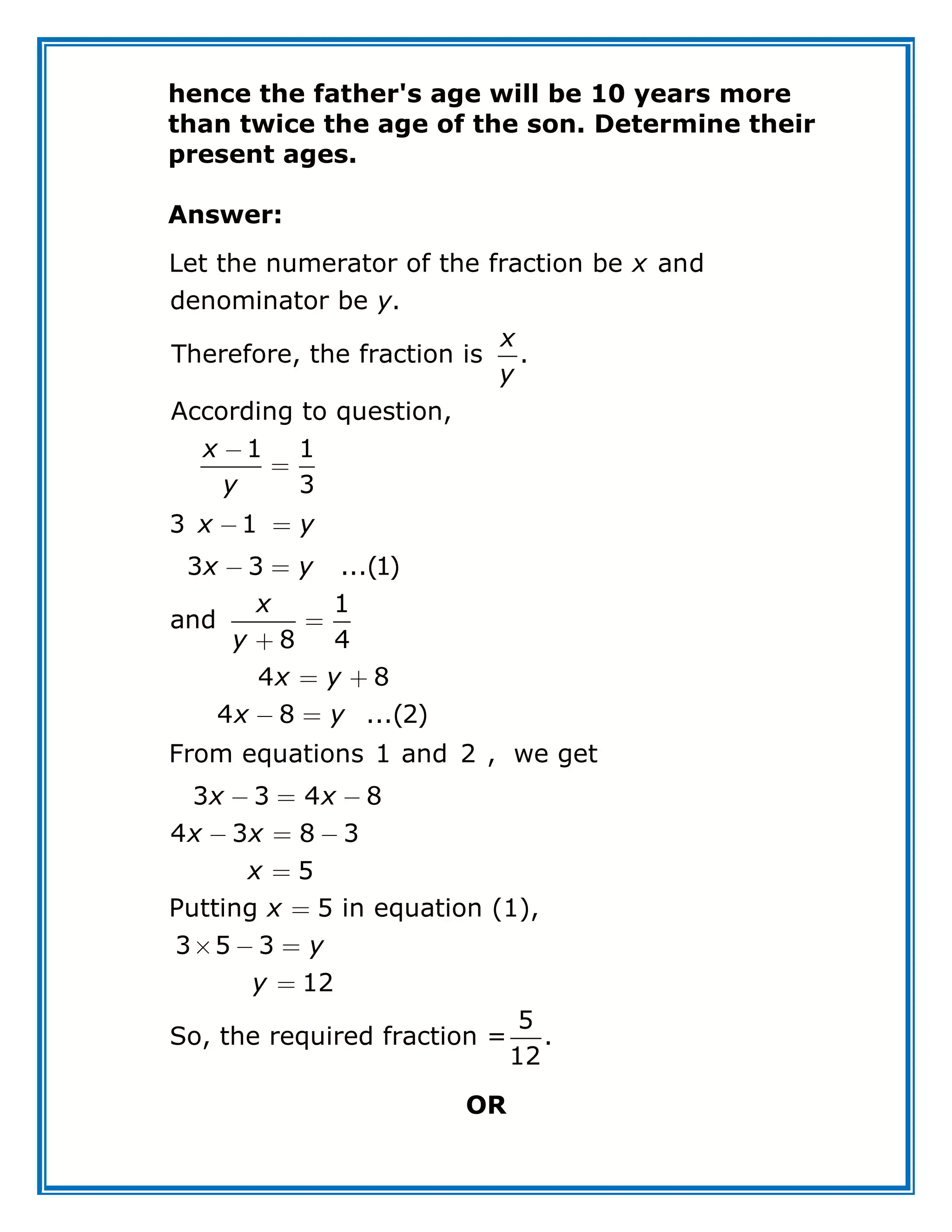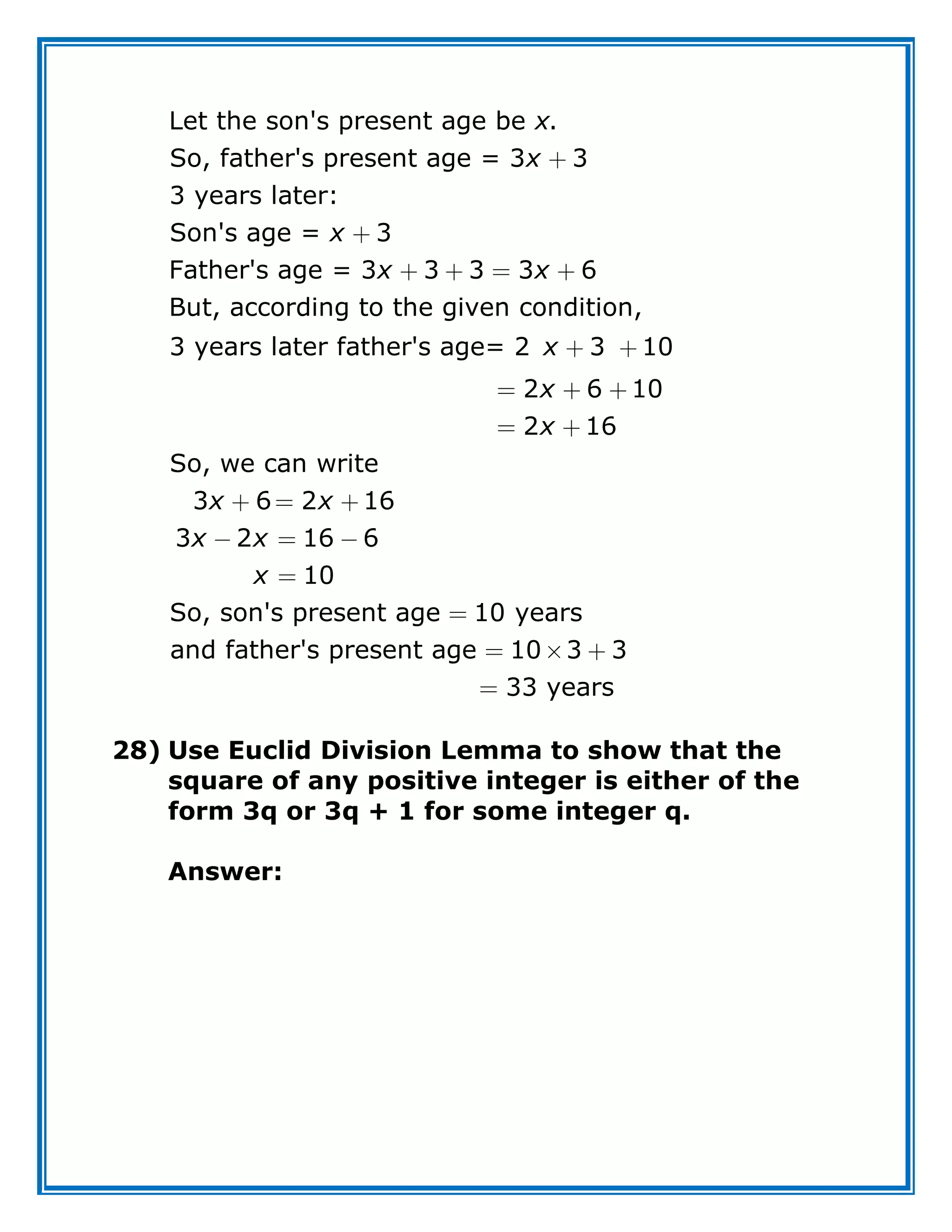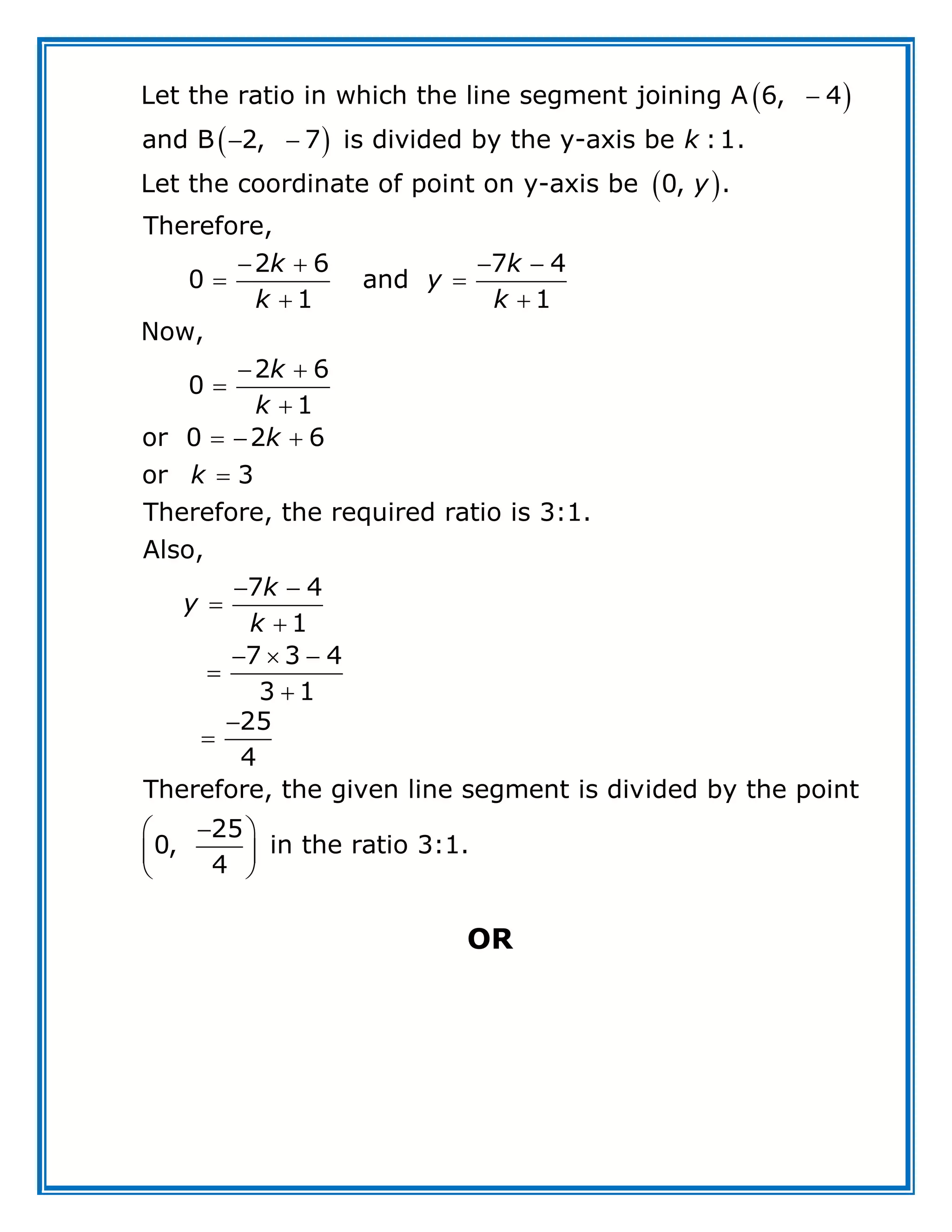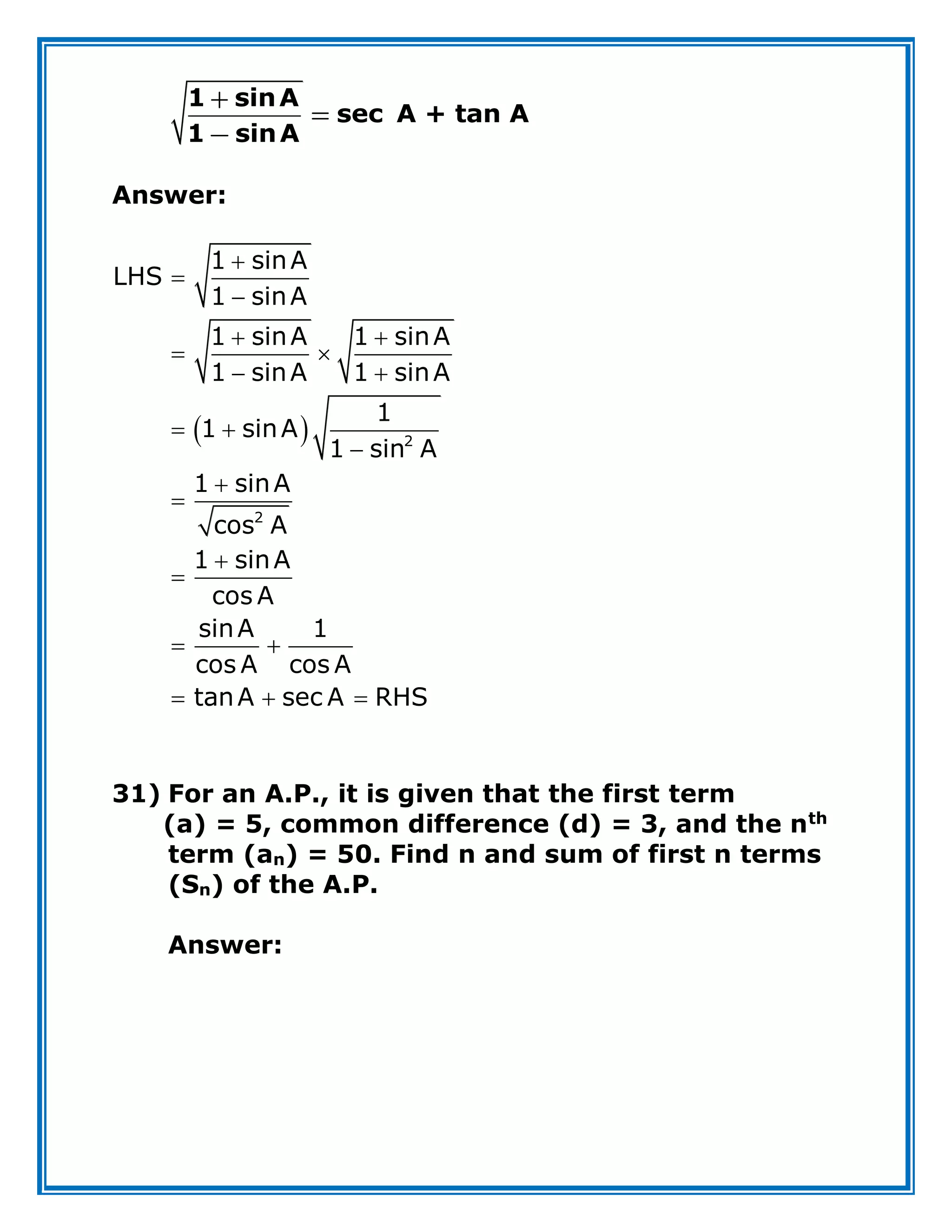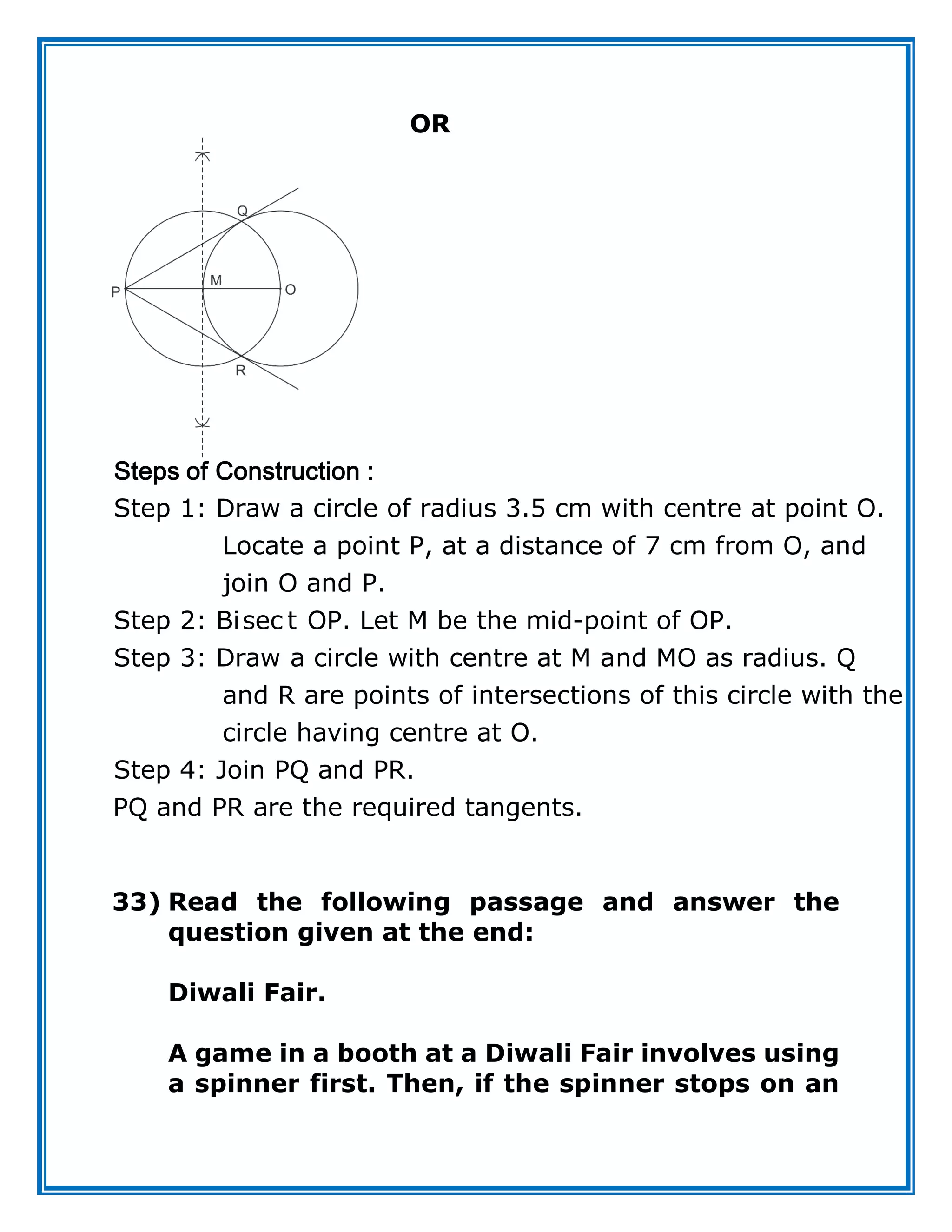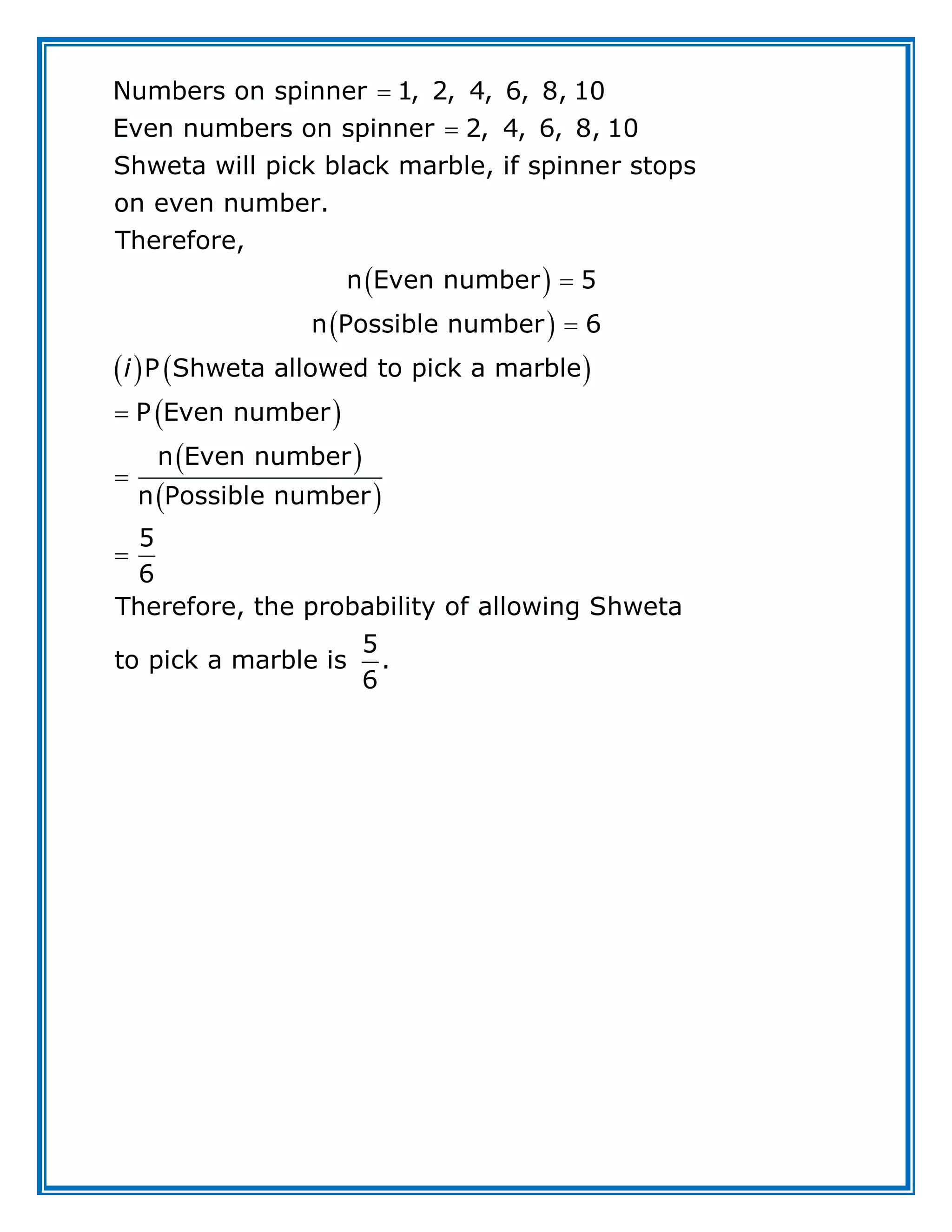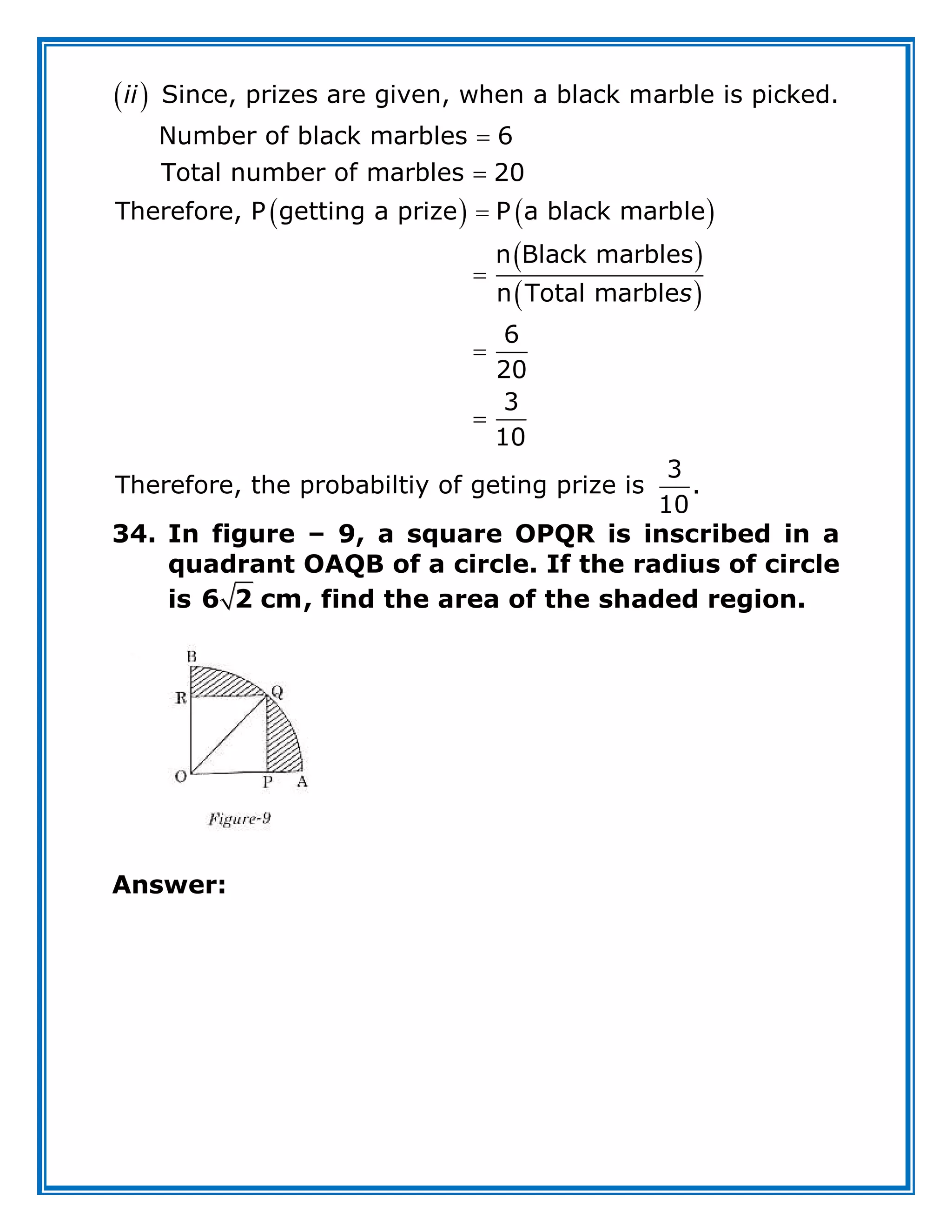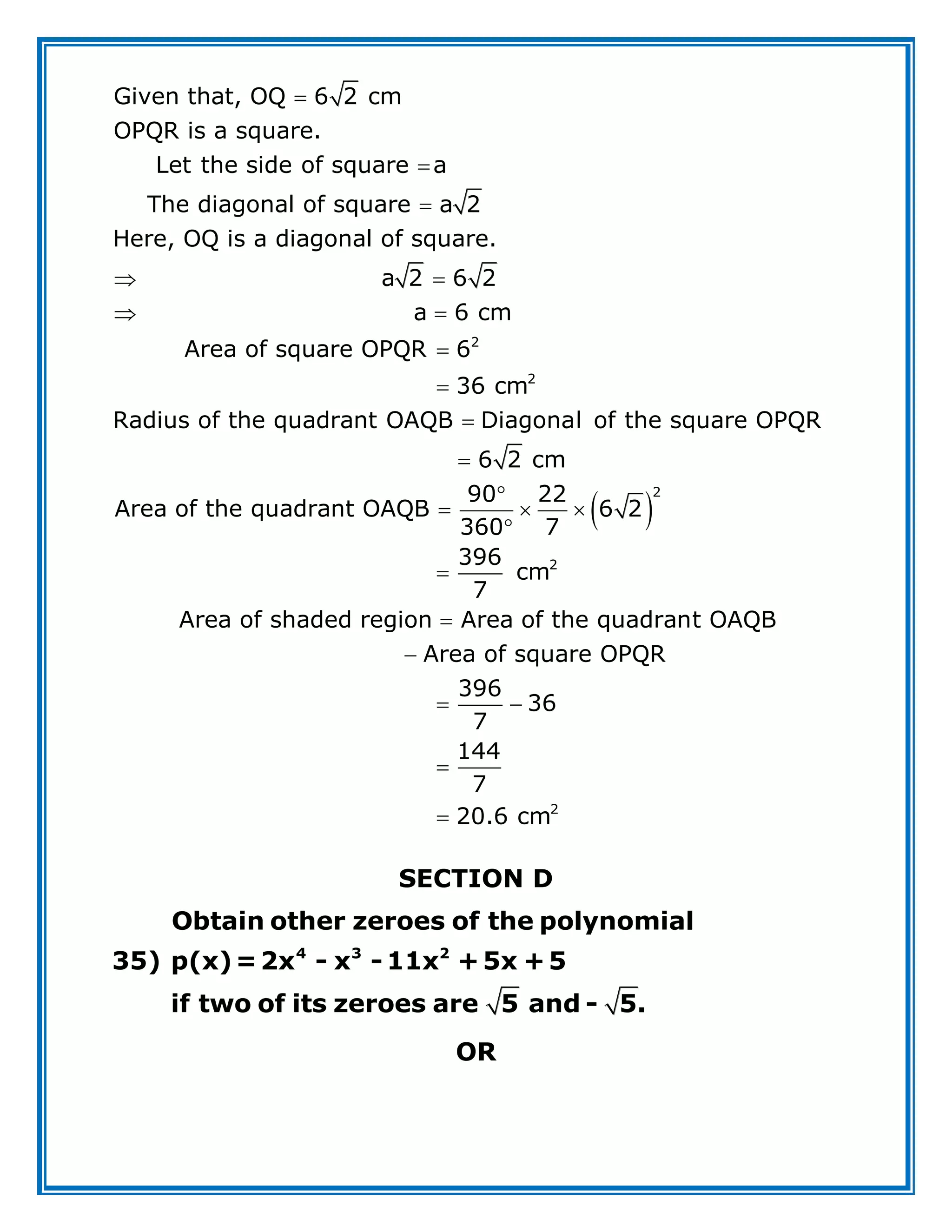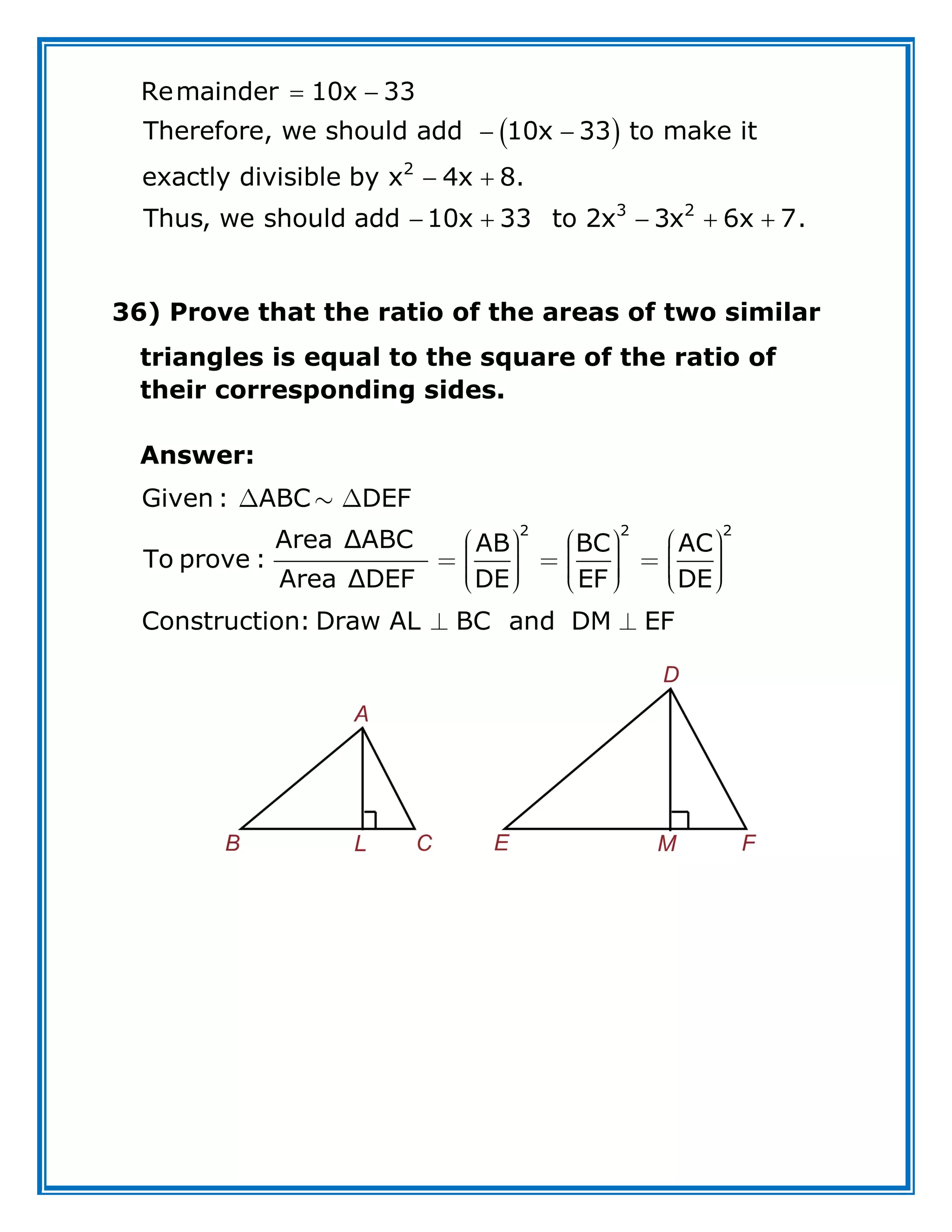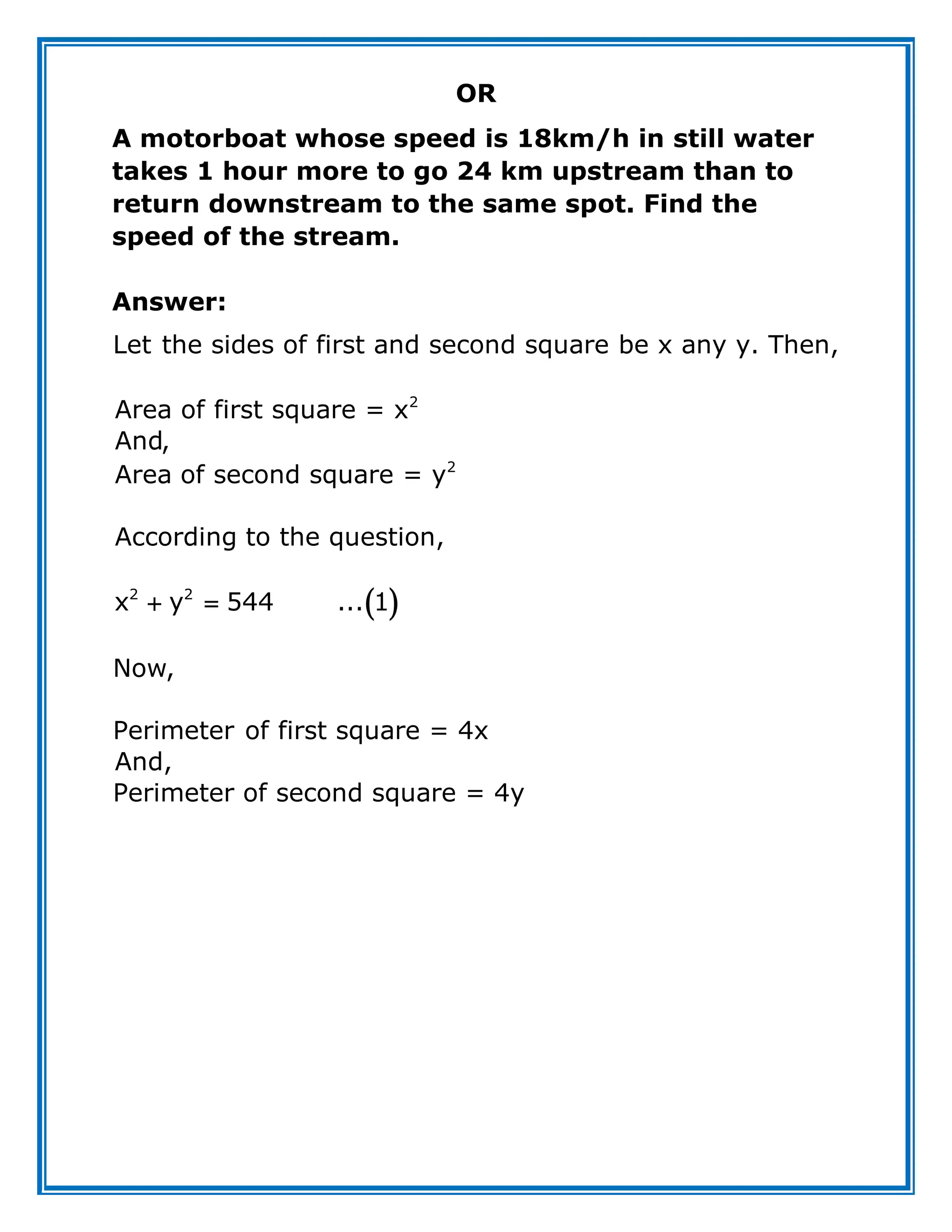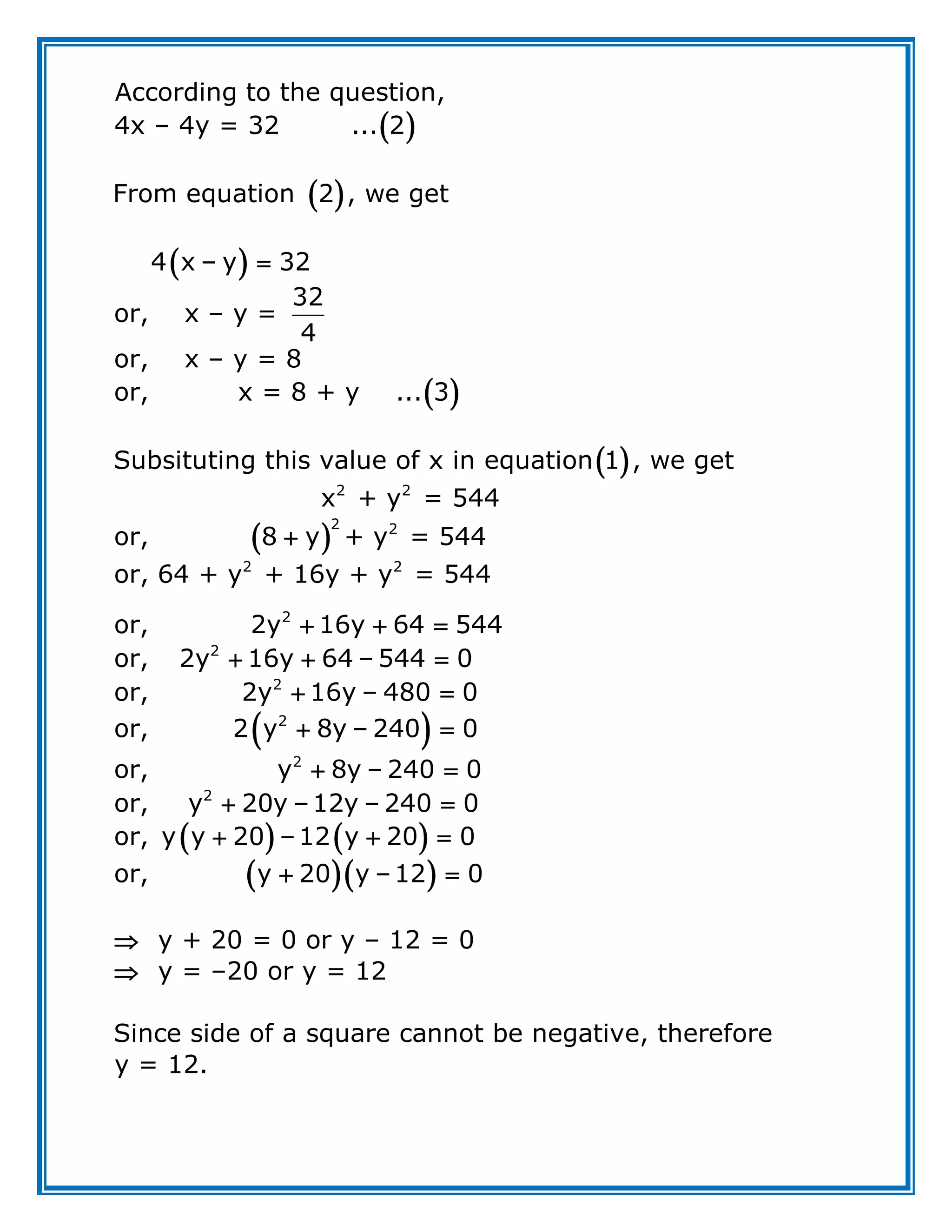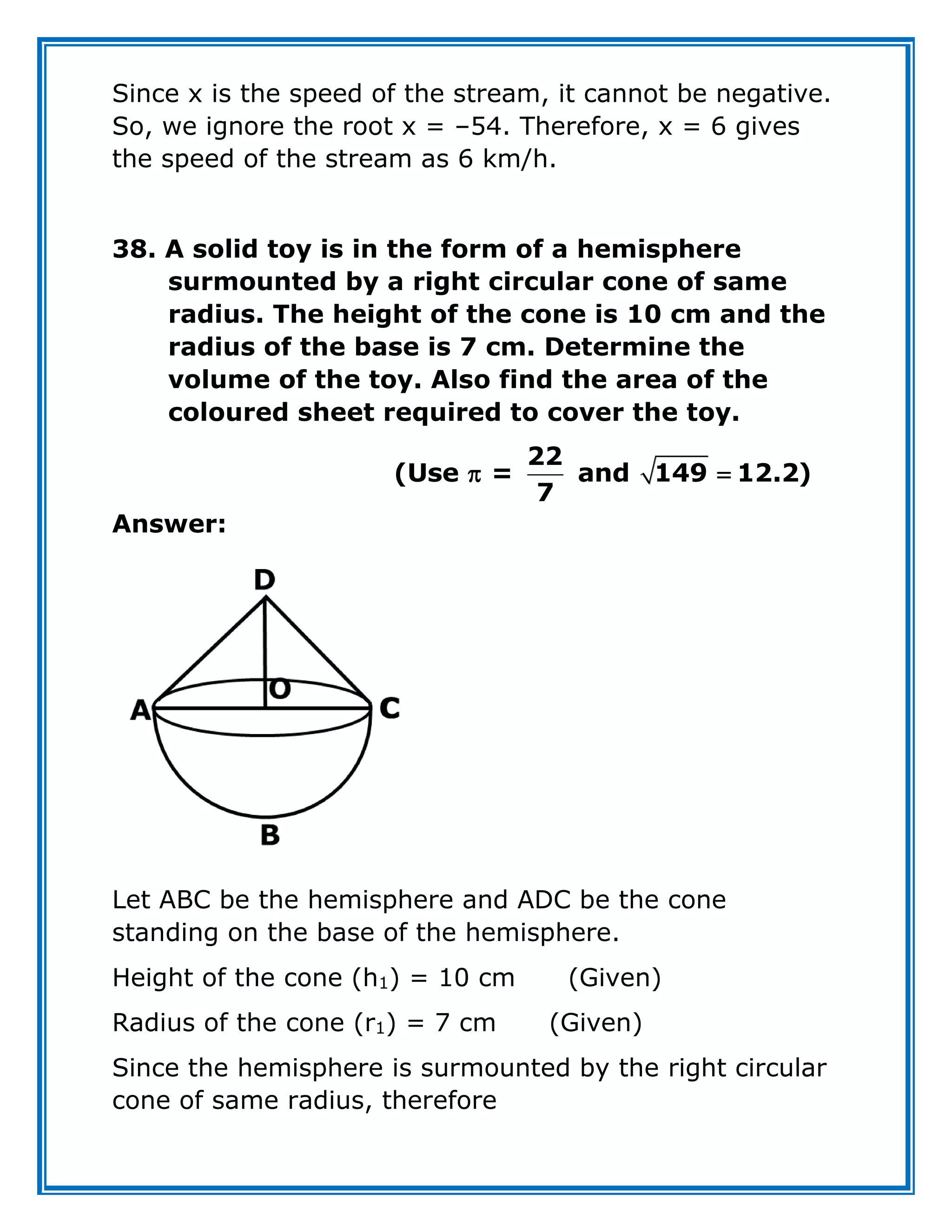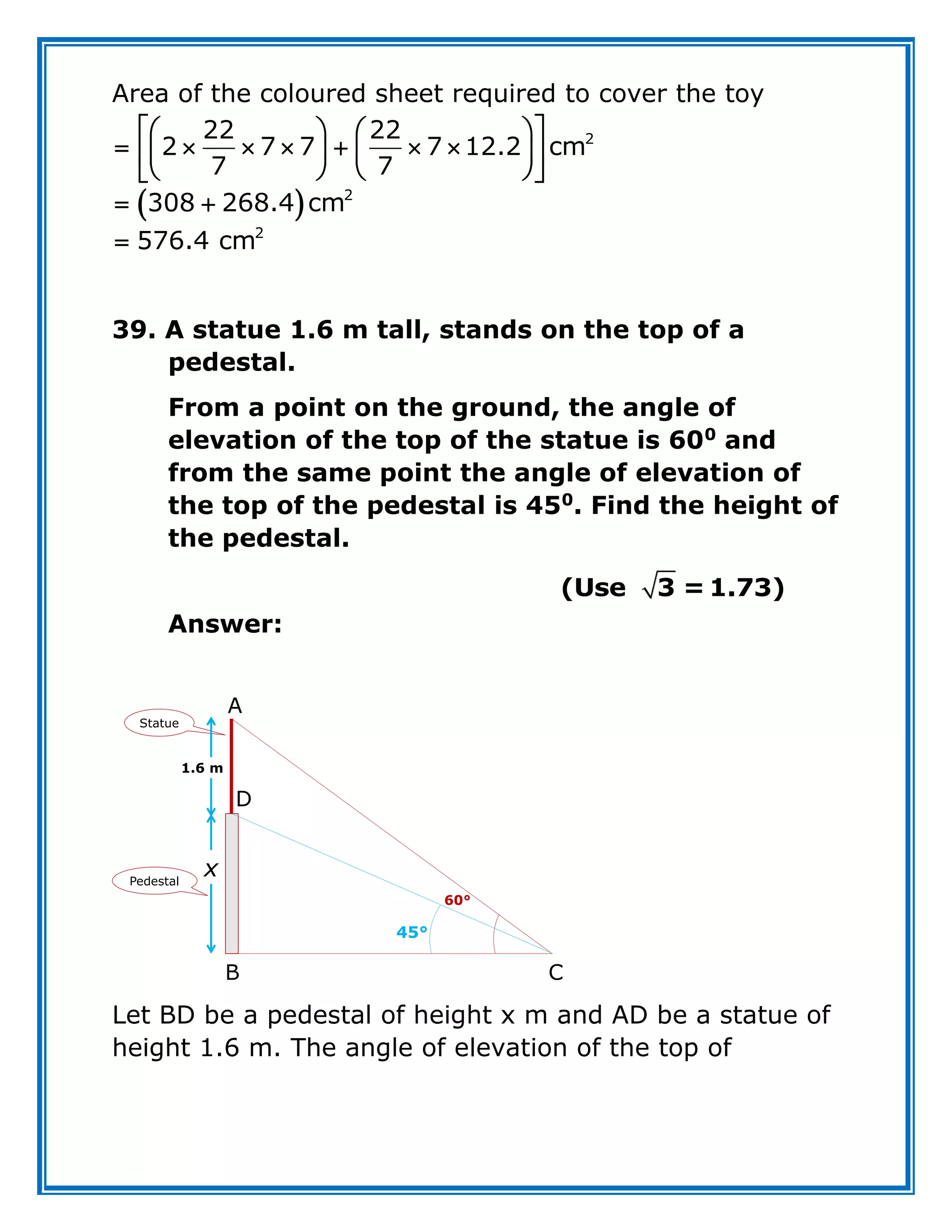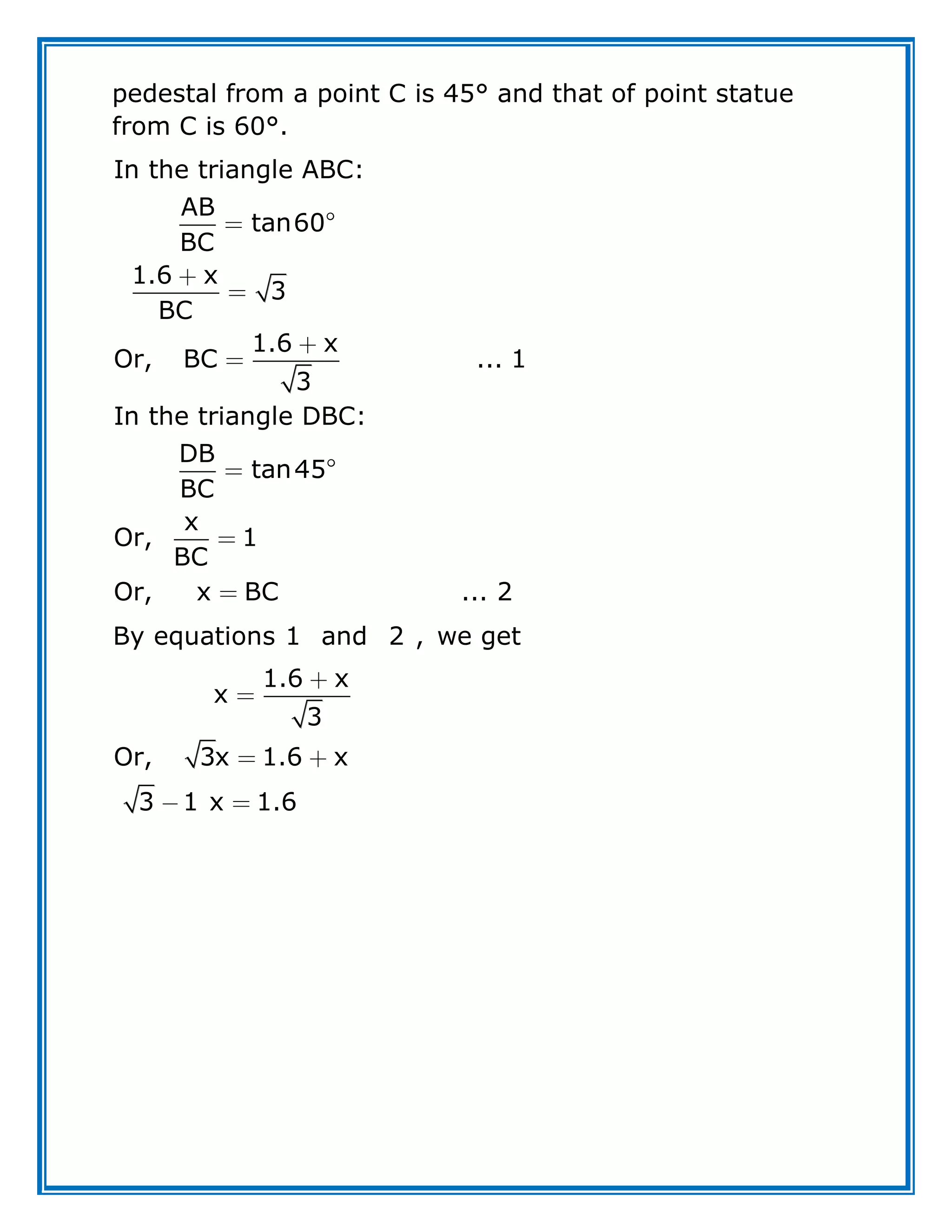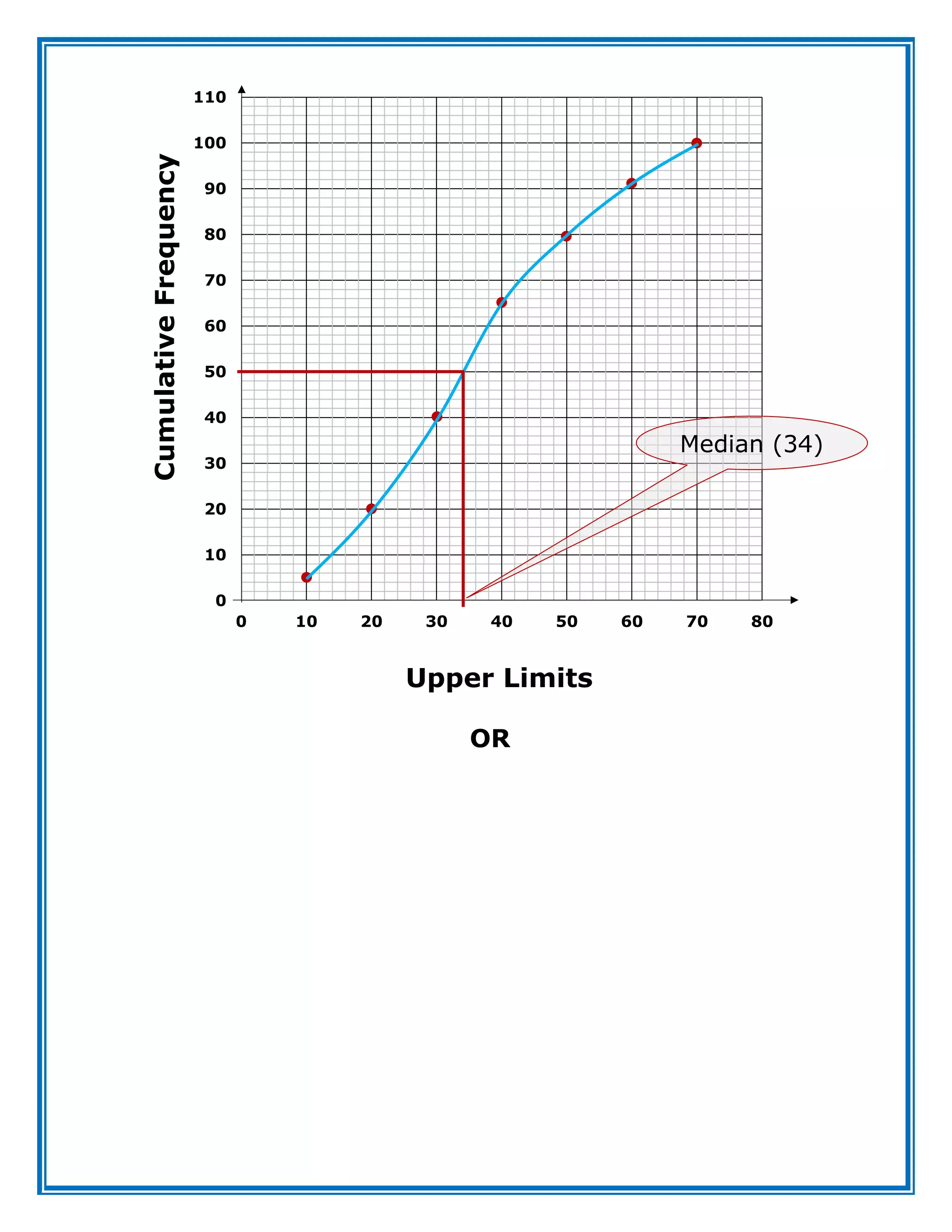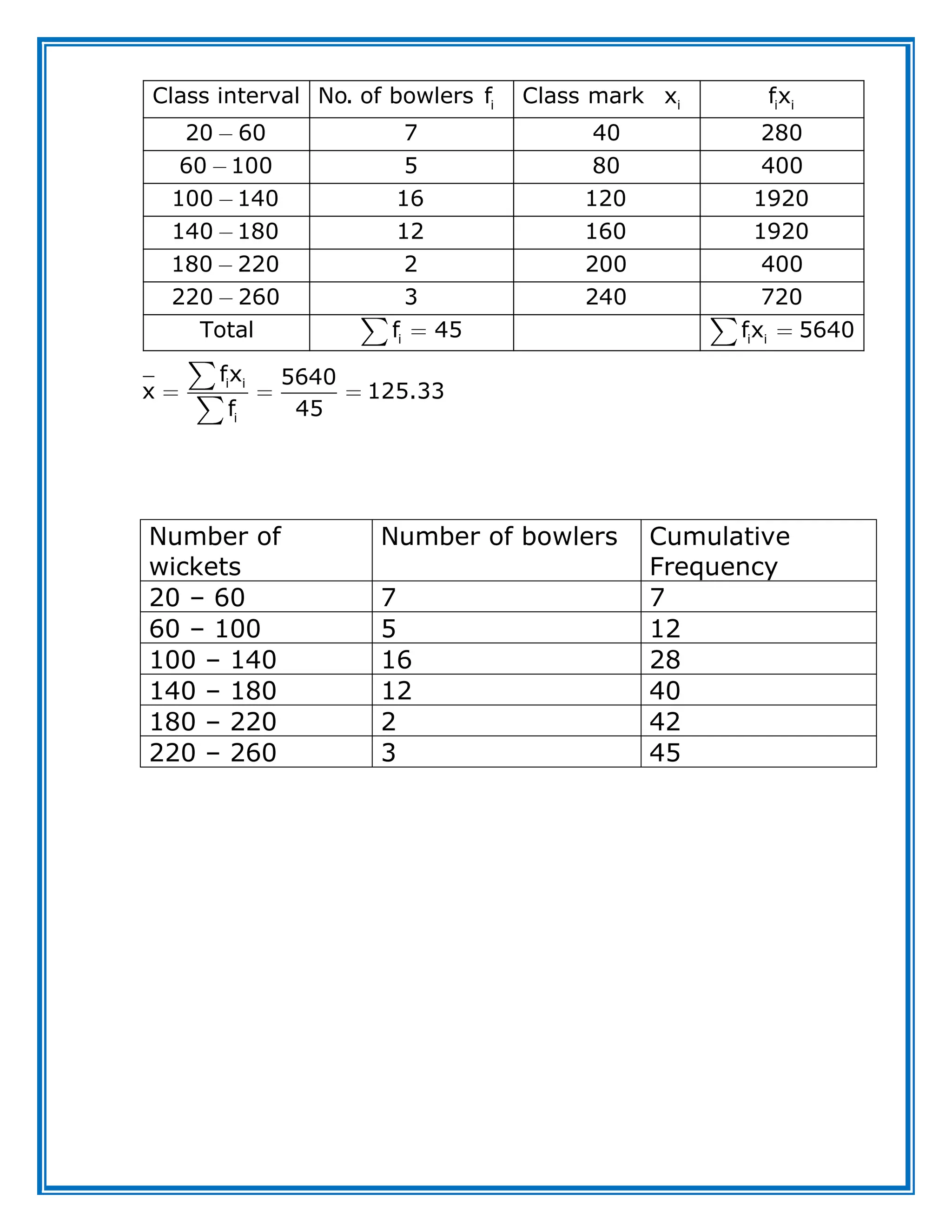This document provides instructions for a mathematics exam for Class X. It has the following key details:
- The exam has 4 sections (A, B, C, D) with a total of 40 questions. All questions are compulsory.
- Section A has 20 one-mark multiple choice questions. Section B has 6 two-mark questions. Section C has 8 three-mark questions. Section D has 6 four-mark questions.
- There is no overall choice but some questions provide an internal choice between alternatives. Students must attempt only one of the choices for those questions.
- Calculators are not permitted. The instructions provide details about the number and type of questions in each section and remind students



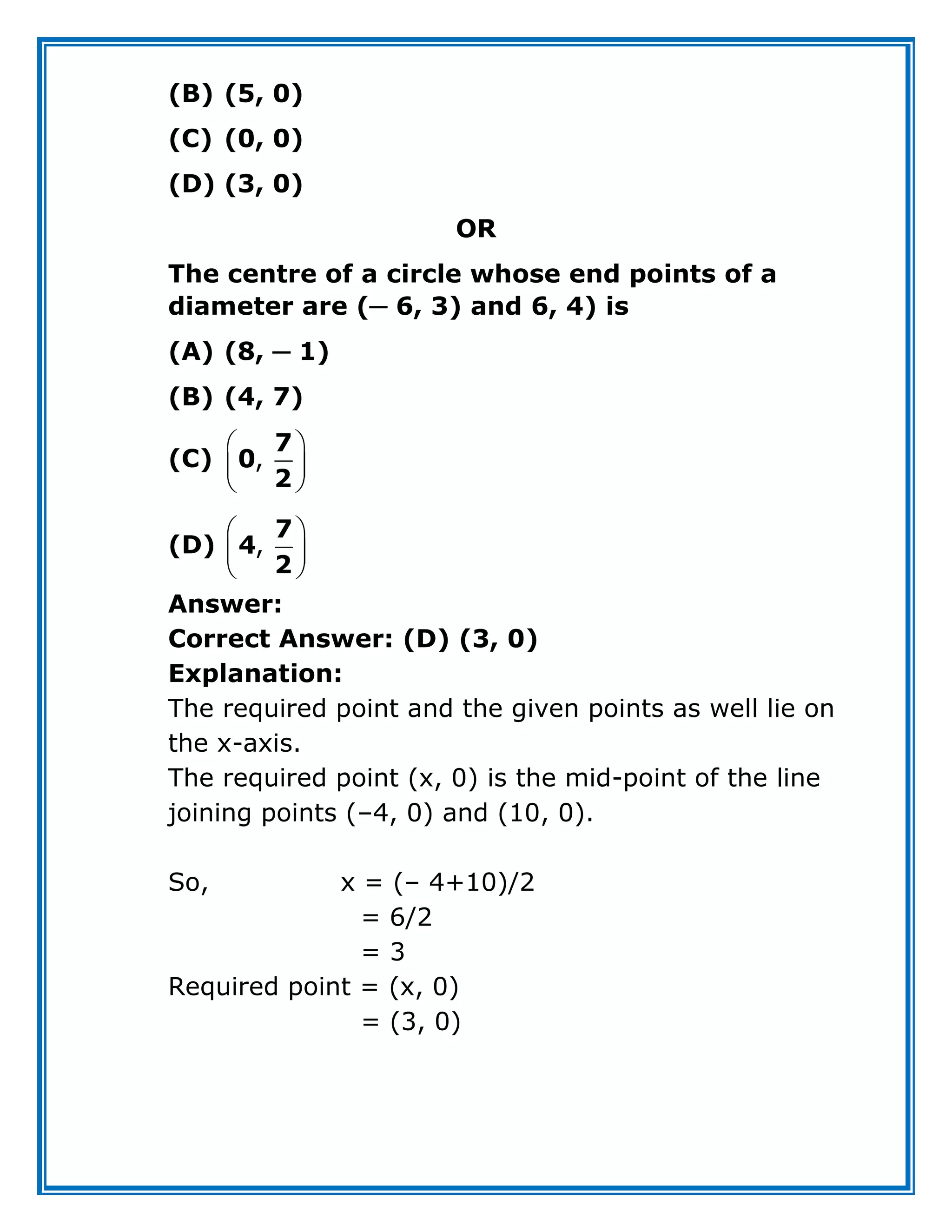


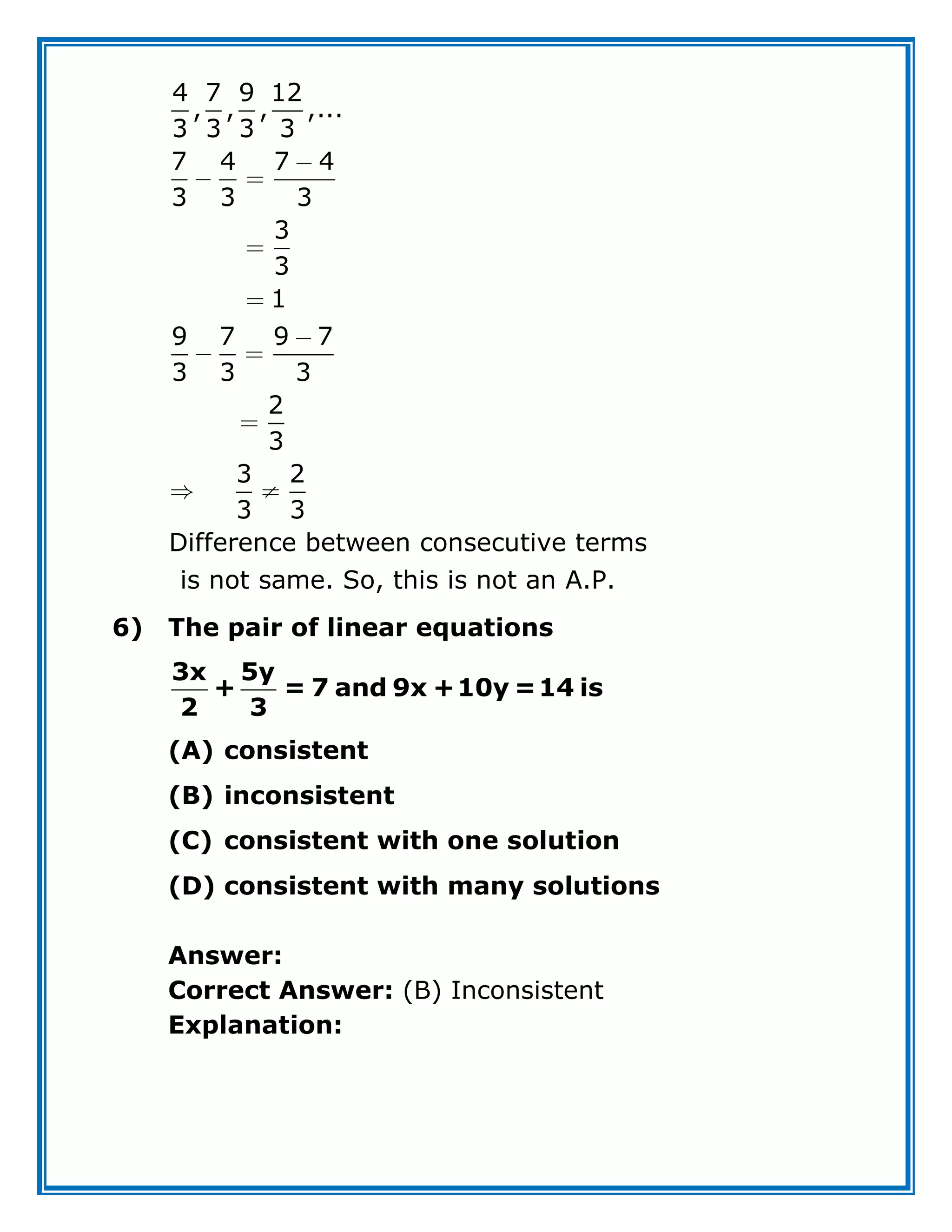
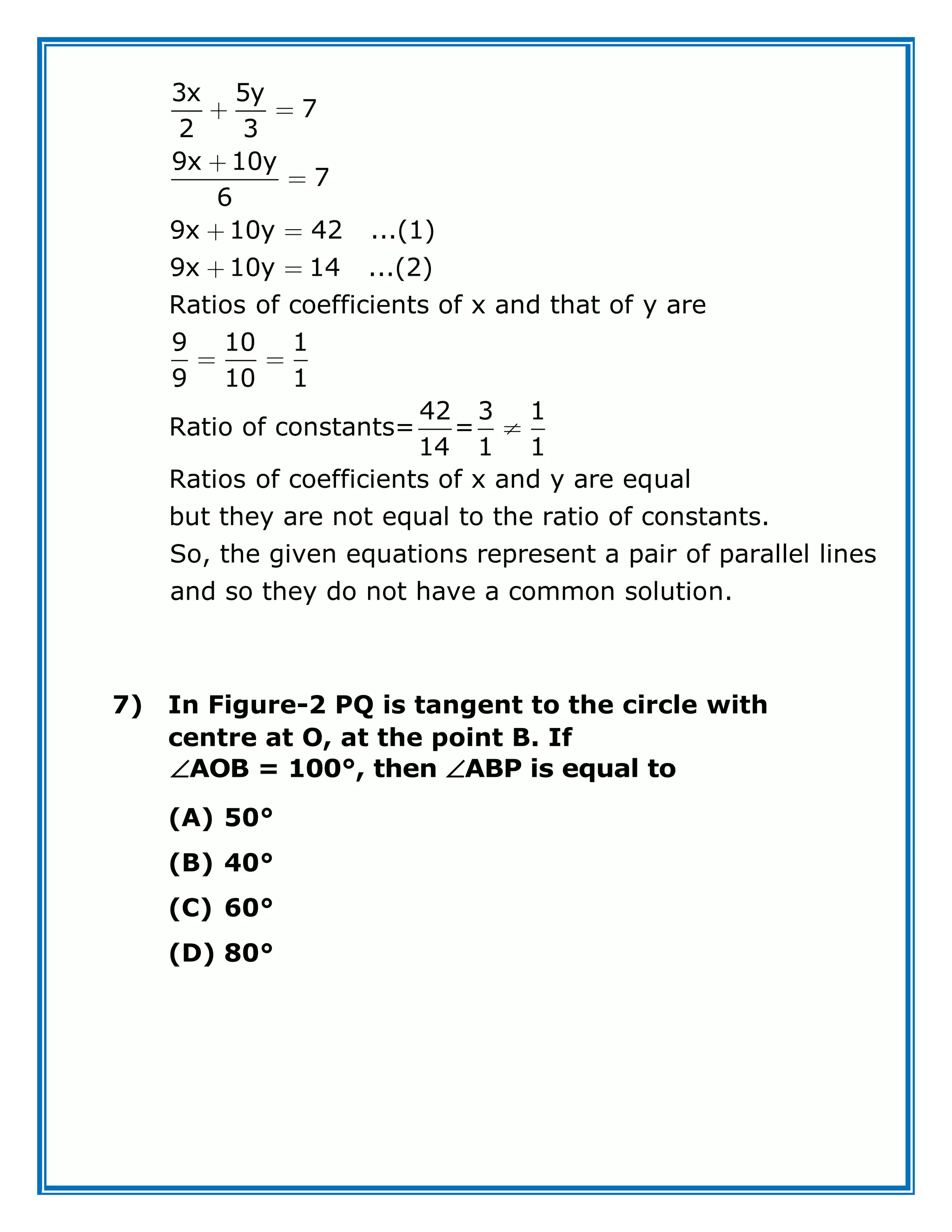

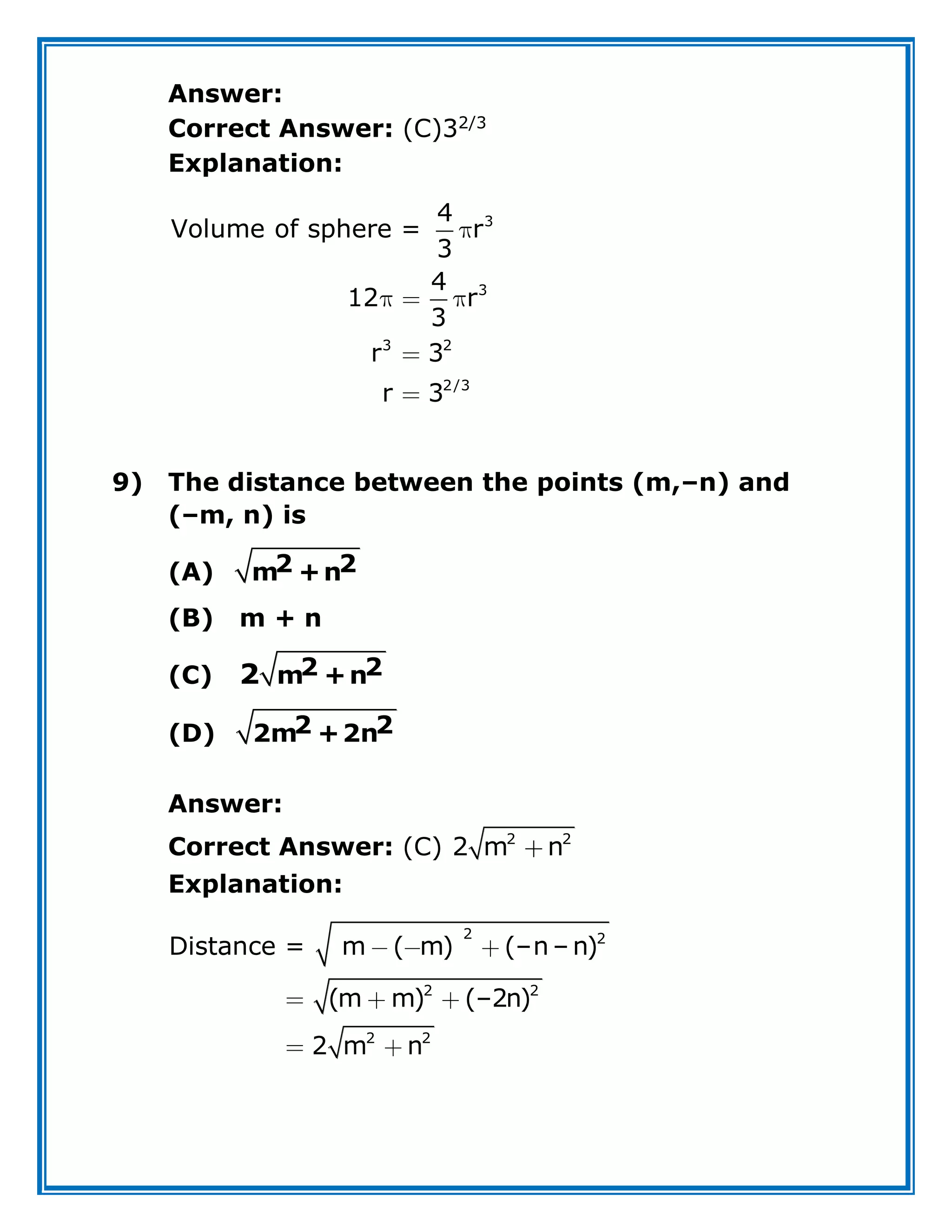
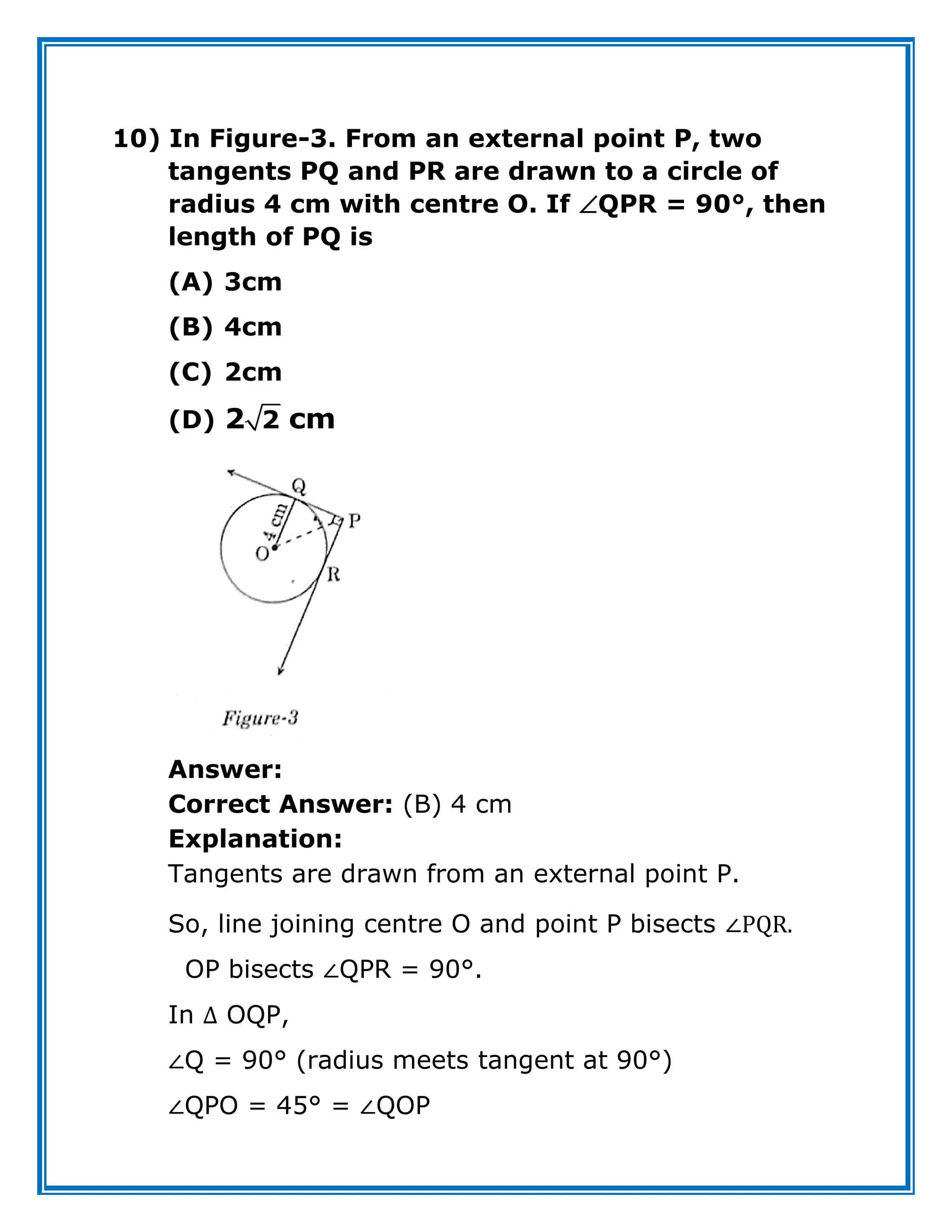



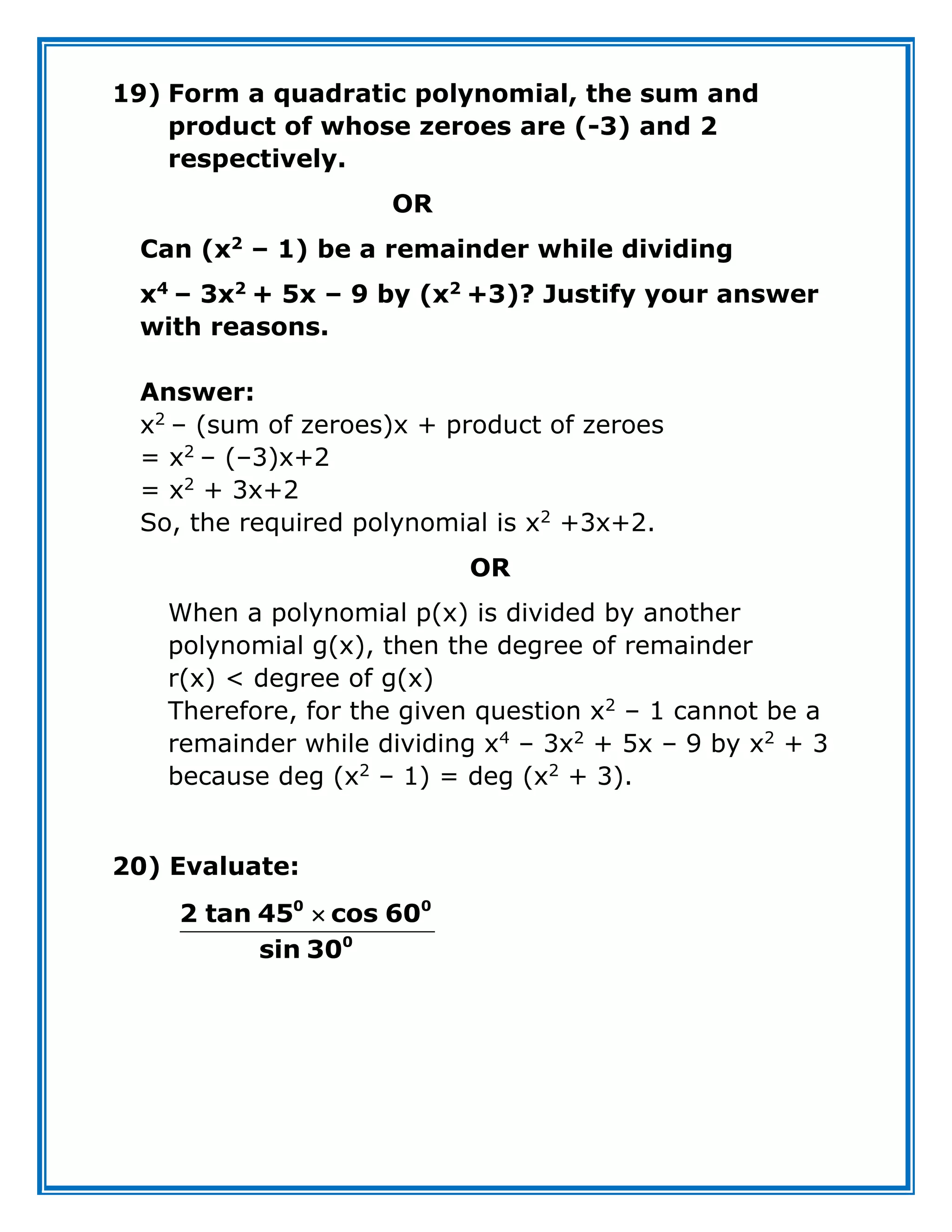




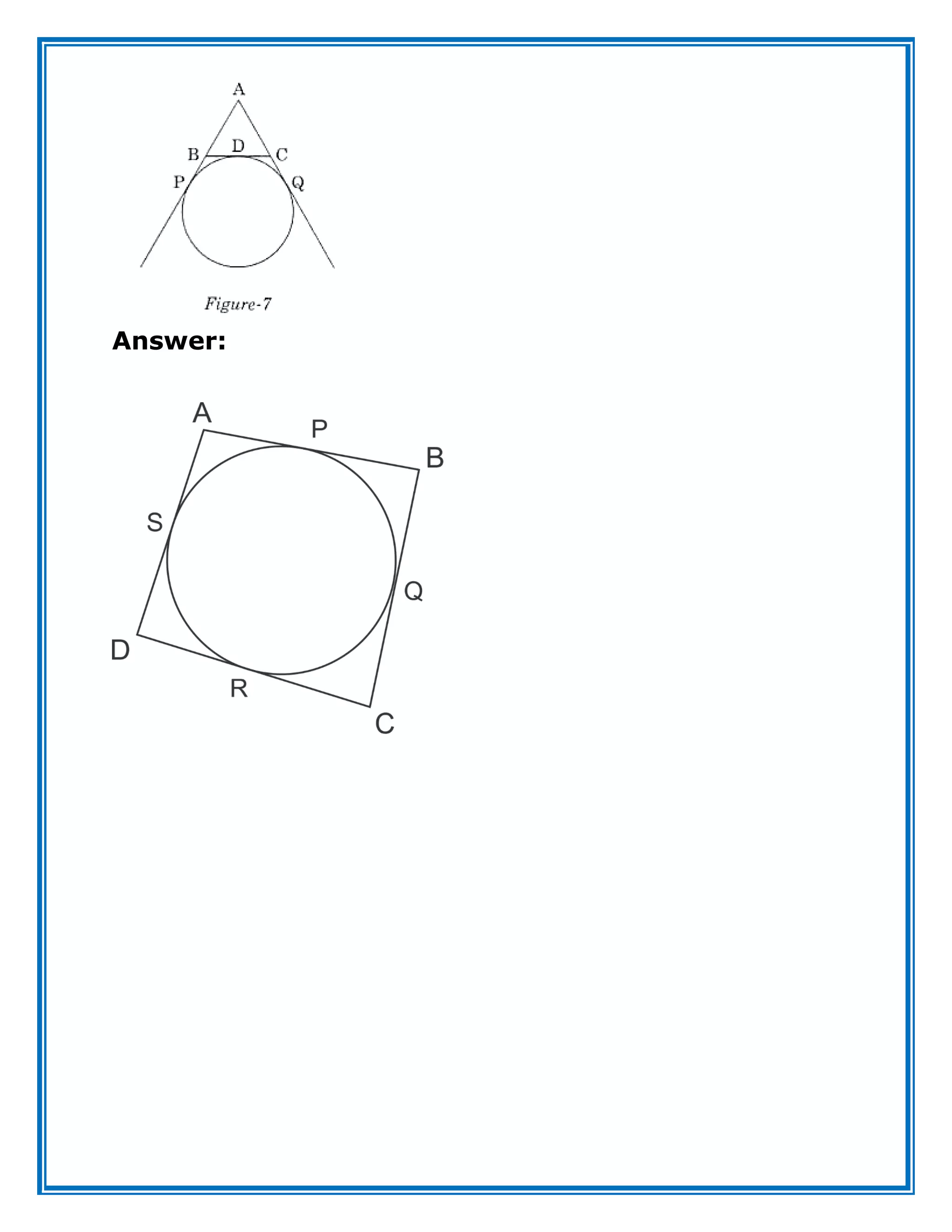
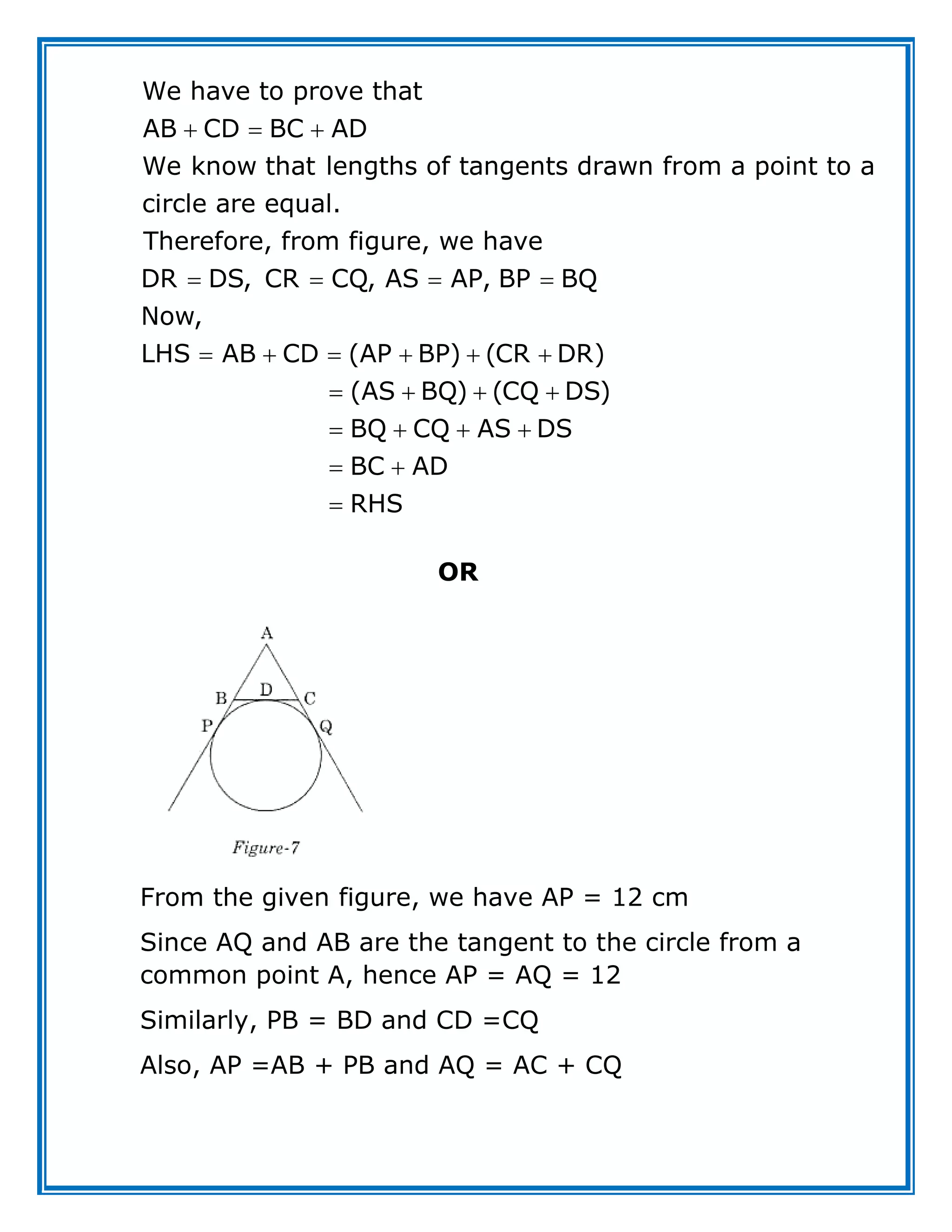


![Answer:
3
3
3 3
3 3
Let the side of the old cube = a
The volume of the old cube = 125 cm (Given)
The volume of the cube = a
a =125 cm
a =5
a = 5 cm
The dimensions of the resulting cuboid are:
Length, l = 10 cm
Breadth, b = 5
2
cm
Height, h = 5 cm
Total surface area of the resulting cuboid:
= 2(lb+bh+hl)
= 2[10(5)+5(5)+5(10)]
= 2[50+25+50]
= 2[125]
= 250 cm
Section C
27) A fraction becomes
1
3
when 1 is subtracted from
the numerator and it becomes
1
4
when 8 is
added to its denominator. Find the fraction.
OR
The present age of a father is three years more
than three times the age of his son. Three years](https://image.slidesharecdn.com/10mathematicsstandard-230226175600-31aea223/75/10-Mathematics-Standard-pdf-24-2048.jpg)
